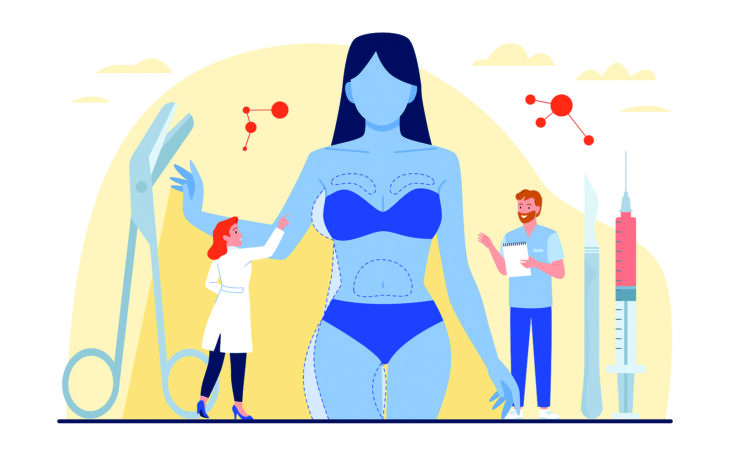Cosmetic surgery trends may change over time, but one constant remains: high demand. U.S. providers perform more than 15 million cosmetic surgery procedures each year, according to Cleveland Clinic, and about 92 percent of patients are women.
So which surgeries are the most popular in 2023, and what should you know if you’re considering having work done? Here’s a rundown to help in your decision making.
1. BREAST LIFT/RESHAPING/AUGMENTATION
Every year, an estimated 300,000 Americans have breast augmentation surgery to change the size and shape of their breasts. This can be achieved with implants or through fat transfer.
Many women who experience breast sagging due to age,pregnancy or breastfeeding may opt for a breast lift, which involves removing excess skin and tightening, reshaping and supporting breast tissue.
Things to consider:
- Breasts won’t stop changing after surgery. Factors like aging and weight gain or loss might alter their appearance.
- It’s possible that breast implants can interfere with breastfeeding.
- Breast implants may need to be replaced for several reasons, such as rupture or capsular contracture, which is tightening of the scar tissue that forms around the implant.
2. EYELID SURGERY
The area around the eyes is a problem zone for many people, and a procedure known as blepharoplasty can be performed on the upper lid, lower lid or both.
Some of the issues this surgery can correct are baggy or droopy lids, loose or sagging skin that can sometimes obscure vision and fatty deposits that appear as puffiness.
Things to consider:
Before booking a blepharoplasty, Dr. Dr. Margaret E. Phillips with Restore Oculoplastics Gulf Coast has suggested asking yourself these questions:
- What is your goal for the procedure? Is it achievable with the surgery you are requesting?
- Do you have the downtime to allow yourself to recover? Blepharoplasty patients can expect to a spend approximately seven to 14 days recovering.
- Do you feel comfortable with the surgeon and his or her plan? Eyelid surgery is “not cookie cutter,” Phillips has said, and each procedure is tailored to each patient’s needs and target outcome.
3. RHINOPLASTY
More than 225,000 people opt to reshape their noses every year, making rhinoplasty the most popular facial plastic surgery. This procedure can fix bumps, narrow the nostrils, reshape the tip or straighten the bridge, and some may undergo a rhinoplasty for health reasons, including breathing problems.
4. LIPOSUCTION
Both men and women are fans of this procedure, which has maintained its popularity for decades. A surgical tool called a cannula is used to remove fat from areas including the abdomen, buttocks, backs, hips, arms and thighs.
Things to consider:
- This procedure is not a weight-loss strategy and not ideal for someone with a large amount of weight to lose. The best candidates are those who are close to their goal weight and have some stubborn areas of fat that are resistant to diet and exercise.
- While many patients bounce back very quickly after surgery, anticipate some bruising and mild pain.
- Factors like advanced age, being a smoker or using blood- thinning medications can affect your candidacy for liposuction.
5. NON-INVASIVE PROCEDURES
This category refers to a wide range of enhancements like Botox and dermal fillers, which don’t require going under the knife but can deliver dramatic results. These treatments combat lines, depressions, wrinkles, or loss of volume associated with aging skin.
Dr. Dawn Hansen of Dermatology Specialists of Mississippi says cosmetic injectables are ideal for those who desire a refresh but want to avoid the “plastic” look that can result after surgical procedures.
Things to consider:
- Injectable clients tend to be pleased with the ease of the procedure and having no downtime afterward, Hansen says.
- “If subtly is preferred, injectables allow the ability to target specific locations rather than a complete transformation at one setting,” Hansen adds. “I recommend that people interested in getting injectables book an appointment with a qualified and experienced provider for a consultation. There are different types of injectable procedures that improve various areas of concern for men and women alike.”
- The effects of injectables like Botox typically last for four to six months, while fillers can last from six to 18 months. Staying hydrated, practicing good skincare and avoiding UV rays are some ways to help prolong your results.


